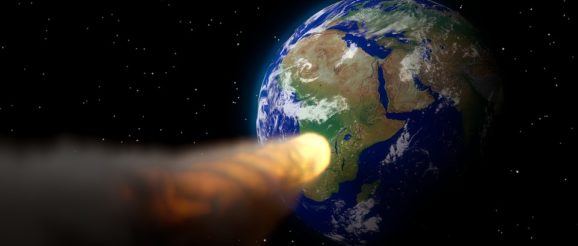The Impact of Evolution on Business Models – Innovation Excellence

Darwin teaches us that evolution is a long, slow process, gradually leading to new adaptive species that emerge over time with specialized capabilities. Therefore, the change in species from generation to generation may be relatively small, but always purposeful and testing the best ways to win in a niche. Just as both the Chihuahua and the Newfoundland emerged from evolution (and a fair amount of selective breeding) from the wolf, modern businesses are slowly emerging and adapting new forms and styles based on the first modern enterprises – the army and the railroads.
What Darwin acknowledged but didn’t fully explore is that most evolution happens as described above, slowly, over generations, evolving to meet the opportunities and needs of environmental niches. Evolution in this regard is based on a slowly changing environment and heavy but balanced competition. What Darwin didn’t spend as much time on is the discordant evolution that accompanied dramatic environmental change, as when the dinosaurs were wiped out by (most likely) an asteroid or when an invasive species with no natural predators enters a niche in relative balance.
Disruption and Evolution
Business structures, models and processes have been adapted from older, original large enterprises and slowly modified over time. The competitive landscape from the turn of the 20th century has seen some dramatic change, from World Wars to the Space Race, and now the advent of the Internet, but until recently the evolution was relatively slow and constant. This means that if we parachuted Henry Ford into a major corporation today, he’d probably feel right at home in most of the operational and structural processes and decision making.
However, the transition to a mostly service based economy, compounded with the growing ability of almost anyone, anywhere, to create a company and effectively compete on a global scale, has the potential to be the major disruptor that the asteroids were to the dinosaurs. Major environmental and competitive transitions are afoot that call into question existing management structures and business models. Slowly evolving corporations must wake up to the fact that a major environmental change is underway, in which identification of customer needs and development of virtual solutions is taking place at a far more rapid tempo than ever before.
To go back to Henry Ford for a minute, the Ford Corporation has acknowledged this and other trends by getting out of the car manufacturing business all together. Strange that in a time when urbanization is rapidly increasing and concerns about fuel efficiency and greenhouse gas emissions are growing that Ford basically eliminates itself from the segment where the most growth should occur. This is an instance of seeing the asteroids in the distance and surrendering to the inevitable, rather than preparing and shifting a business model to win where opportunities will be the best in the future.
Betting on Today or on the Future
Ford is betting on consumer appetites and demands that are true today by betting on building more trucks and SUVs. As a shareholder concerned about short term revenues and profits, we are likely to applaud this move. But this is equivalent to seeing the asteroids and knowing they’ll hit in five to ten years and deciding to become a bigger dinosaur, rather than preparing for the inevitable switch.
Innovators need to understand this. One of the biggest challenges to innovation is current success. Ford is banking on customer sentiment and the desire for large vehicles to remain high. Some of this bet is reasonable, as electric motors become more powerful and efficient and people seem to demand larger vehicles. But other trends suggest that smaller cars will be very attractive, as the price of energy rarely falls and urbanization and other trends indicate the need for smaller vehicles. One factor that cannot yet be measured or perhaps even understood is the impact of autonomous vehicles on vehicle usage and ownership. Ford is banking on demand for larger vehicles increasing regardless of what happens with autonomous viability and usage.
Is there an innovation asteroid?
Like the dinosaurs before us, which dominated the Earth for far longer than humans, and significantly longer than human corporations, we need to ask – are their disruptive points of change in corporate evolution, just as their are in the evolution of species – and if so, what might they look like? Does the shift toward full digital transformation of businesses create an asteroid targeting the existing corporate model? Are they prepared? Can innovators and innovation create a bridge to the future?
I think so. With enough forethought and the appropriate use of trends and scenario planning, we should be able to identify some potential future scenarios and understand the impacts of dramatic environmental and competitive change. Simply ignoring the change around us is a recipe for failure and obsolescence. How long will it take for a new generation of management to rise to address the discontinuity emerging from new technologies and new business structures?
Image credit: Pixabay
Wait! Before you go…
Choose how you want the latest innovation content delivered to you:
 Jeffrey Phillips has over 15 years of experience leading innovation in Fortune 500 companies, federal government agencies and non-profits. He is experienced in innovation strategy, defining and implementing front end processes, tools and teams and leading innovation projects. He is the author of Relentless Innovation and OutManeuver. Jeffrey writes the popular Innovate on Purpose blog. Follow him @ovoinnovation
Jeffrey Phillips has over 15 years of experience leading innovation in Fortune 500 companies, federal government agencies and non-profits. He is experienced in innovation strategy, defining and implementing front end processes, tools and teams and leading innovation projects. He is the author of Relentless Innovation and OutManeuver. Jeffrey writes the popular Innovate on Purpose blog. Follow him @ovoinnovation
